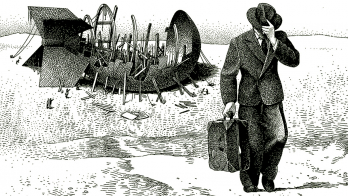The Nobel Prize in Physics for 2010 has been awarded to Andre Geim and Konstantin Novoselov, both of the University of Manchester, for their “groundbreaking experiments regarding the two-dimensional material graphene”. Graphene – which consists of a layer of carbon just one atom thick – has exceptional properties that have made it a micro-laboratory for quantum physics (for example, see. At a time when many researchers believed it was impossible for such thin crystalline materials to be stable, Geim and Novoselov extracted the graphene from a piece of graphite using only normal adhesive tape to obtain monatomic layers of carbon and transfer them to a silicon substrate. They used an optical method to identify the monolayers.
Not only is graphene the thinnest material ever made, it is also the strongest; it is also an excellent conductor and is almost completely transparent. These properties suggest applications that include very fast transistors and transparent touch screens. When mixed into plastics, graphene can make new very strong materials, which are nevertheless thin, elastic and lightweight.
Novoselov, 36, first worked with Andre Geim, 51, as a PhD student in the Netherlands. He subsequently followed Geim to the UK. Both studied and began their careers in Russia and are now professors at Manchester.








